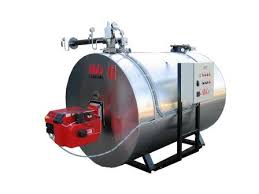
Feb . 07, 2025 01:35 Back to list
steam boiler checklist
Steam boilers play a vital role in the efficiency and safety of industries globally. Therefore, adhering to a well-structured steam boiler checklist is imperative to maintain operational excellence, energy efficiency, and personnel safety. In this comprehensive guide, we delve into the nuances of an effective steam boiler checklist, drawing from authentic experiences and expert insights, thereby providing a distinct perspective that stands out on the web.
3. Inspect Piping and Fittings Assess all associated piping systems for signs of corrosion or wear, which can lead to inefficiency or leaks. 4. Fuel Supply System Ensure that lines, valves, and fittings of the fuel supply system are free from obstructions or damage to maintain consistent fuel delivery. 5. Ventilation Confirm that ventilation openings are clear and functioning effectively, which is crucial for combustion efficiency and safety. Quarterly and Annual Evaluations Conducting comprehensive evaluations less frequently includes a more exhaustive checklist focusing on the extensive evaluation of system integrity and efficiency. 1. Complete Internal Inspection Disassemble necessary sections to allow for a meticulous internal inspection. Look for signs of pitting, scaling, or erosion in the pressure vessel. 2. Control Panel and Automation Check Test the control panel and automation systems. Faulty control systems can lead to inappropriate pressure settings or safety breaches. 3. Efficiency Analysis Conduct a detailed energy efficiency audit. Inspect insulation, combustion efficiency, and control settings to ensure the boiler is functioning at optimal energy consumption. 4. Emission Monitoring Ensure emissions align with environmental standards, adjusting any relevant combustion settings to reduce pollutants. 5. Professional Assessment Engage a qualified technician for an unbiased appraisal of the boiler system’s overall health. This is vital for a stress-free operation, aligning with compliance mandates and safety standards. In practicing this methodology, the convergence of routine, intermediate, and extensive checks encapsulates a full-spectrum approach to boiler management. Not only does this holistic maintenance strategy reduce the likelihood of errors and hazards, but it also enhances productivity by maximizing the boiler’s operating efficiency. Adhering to a systematic steam boiler checklist instills reliability and trust, capturing the balance between expertise and experience. This approach underscores the essence of superior boiler management—fueling sustainable operations and ensuring adept leadership in industrial applications. By following these expert guidelines, boiler operators can fortify their operations with increased authority and credibility.


3. Inspect Piping and Fittings Assess all associated piping systems for signs of corrosion or wear, which can lead to inefficiency or leaks. 4. Fuel Supply System Ensure that lines, valves, and fittings of the fuel supply system are free from obstructions or damage to maintain consistent fuel delivery. 5. Ventilation Confirm that ventilation openings are clear and functioning effectively, which is crucial for combustion efficiency and safety. Quarterly and Annual Evaluations Conducting comprehensive evaluations less frequently includes a more exhaustive checklist focusing on the extensive evaluation of system integrity and efficiency. 1. Complete Internal Inspection Disassemble necessary sections to allow for a meticulous internal inspection. Look for signs of pitting, scaling, or erosion in the pressure vessel. 2. Control Panel and Automation Check Test the control panel and automation systems. Faulty control systems can lead to inappropriate pressure settings or safety breaches. 3. Efficiency Analysis Conduct a detailed energy efficiency audit. Inspect insulation, combustion efficiency, and control settings to ensure the boiler is functioning at optimal energy consumption. 4. Emission Monitoring Ensure emissions align with environmental standards, adjusting any relevant combustion settings to reduce pollutants. 5. Professional Assessment Engage a qualified technician for an unbiased appraisal of the boiler system’s overall health. This is vital for a stress-free operation, aligning with compliance mandates and safety standards. In practicing this methodology, the convergence of routine, intermediate, and extensive checks encapsulates a full-spectrum approach to boiler management. Not only does this holistic maintenance strategy reduce the likelihood of errors and hazards, but it also enhances productivity by maximizing the boiler’s operating efficiency. Adhering to a systematic steam boiler checklist instills reliability and trust, capturing the balance between expertise and experience. This approach underscores the essence of superior boiler management—fueling sustainable operations and ensuring adept leadership in industrial applications. By following these expert guidelines, boiler operators can fortify their operations with increased authority and credibility.
Share
Latest News
-
Best Steam Boiler Design PDF Free Design Calculation & Diagram Downloads
NewsJun.10,2025
-
Hot Boiler Water Heater Efficient Heating Solutions for Home & Commercial Use
NewsJun.10,2025
-
Steam Boiler Safety Devices High-Quality Protection Valves
NewsJun.10,2025
-
Ultimate Steam Boiler Checklist for Safety & Efficiency
NewsJun.10,2025
-
Optimal Hot Water Boiler Temperature Setting Guide
NewsJun.10,2025
-
Effective Hot Water Boiler Chemical Treatment Protect & Maintain
NewsJun.09,2025
Related PRODUCTS
Copyright © 2025 HEBEI HONGZE BOILER MANUFACTURING CO., LTD. All Rights Reserved. Sitemap | Privacy Policy






















